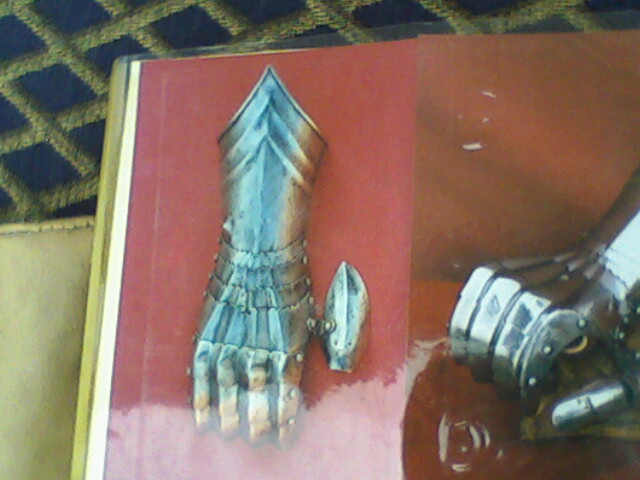[ Linked Image ]
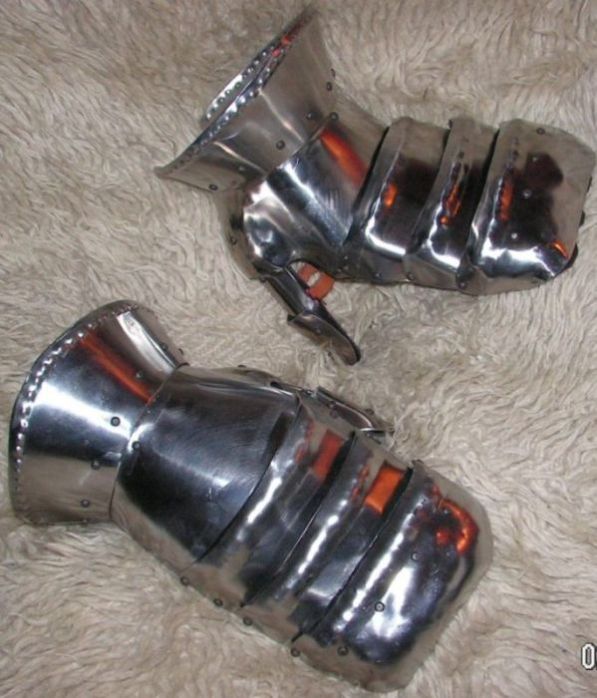
Modern Hourglass mitten gauntlets

| Maciej Cierkosz wrote: |
| Some of the armourers make them, some of reenactors use such gauntlets - i`ts practical, they give a lot of protection... but is there any proof that "hourglass mitten gauntlets" did exist? Some say that hourglass mittens were born in the beggining of XV century, as a "child" of hourglass finger gauntlets evolution..., but I haven`t seen an evidence for that... Is there an effigy, illumination, or any archeological sign from the beginning of XV cent, that is a proof for those, who believe in such gauntlets? |
| Claude Blair wrote: |
|
(15th century Italian Gauntlets) During the 1430's the fingered gauntlets of the type found on the Churburg armour developed into mittens. This was effected by prolonging the metacarpal plates to the tips of the fingers. The right gauntlet was usually articulated once at the wrist and twice over the fingers, while the left one, which for obvious reasons did not have to be so flexible, was articulated once over the middle of the fingers. At the same time the backs of the cuffs were prolonged up the forearms; these prolongations were at first rounded but during the '40's grew gradually longer and more pointed until by c, 1450 they had become almost leaf-shaped and had extended to just below the couters. This form remained in use until the end of the century. (15th century German Gauntlets) ...the gauntlets at first followed more or less the same lines of development in Germany as in Italy, except that they always seem to have remained symmetrical and the cuffs did not become pointed. The hour-glass form remained in use until c. 1430 but by c. 1425 a new type had already been developed from it by extending the metacarpal plate to the tips of the fingers and the back of the cuff to nearly halfway up the forearm. This new gauntlet protected the backs and sides of the hand and had a narrow strip across the inside of the wrist. The whole of the main plate was often made in one piece. It had a slight bend along the line of the knuckles and was embossed to the shape of the base of the thumb, the thumb itself being protected by small laminations rivetted to a leather base; similar plates or mail seem only occasionally to be worn over the fingers. On a pair of contemporary gauntlets at Churburg, there is a join, allowing for slight movement at the wrist. On a gauntlet of c. 1440 for the right hand in the Museum fur Deutsche Geschichte, Berlin, the finger-lame is articulated twice, while on a pair of gauntlets of c. 1450-60 by Konrad Treytz the Elder of Innsbruck the finger lame is articulated once only, along the line of the knuckles. All these gauntlets have had the lining-gloves partially stitched in -place and partially held by a strap across the fingers. Mitten-gauntlets of the type described above remained in general use until c. 1460 although they began to be supplanted by a new form in the 1450's. This new form was elongated and narrow at the wrist, where it was embossed over the ulna, and had a separate thumb-piece attached by a hinge; the metacarpal and finger-defences, each composed of several narrow articulations, were linked by an embossed knuckle-plate. During the period c. 1460-50 the cuff was usually very sharply pointed and the back of the gauntlet decorated with radiating embossed ribs; the lines of demarcation between the fingers were similarly indicated with V-section flutes. During the same period fingered gauntlets came back into fashion for a short time, although they never ousted the mitten...During the last decade of the century a short cuff with a straight edge and with the inner plate secured by the means of a pin-catch, came into fashion and by c. 1500 had supplanted the other form. |
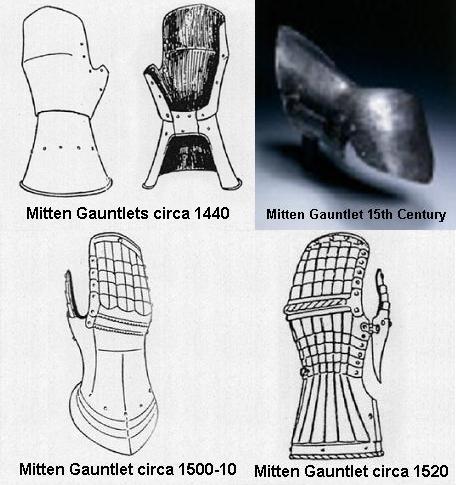
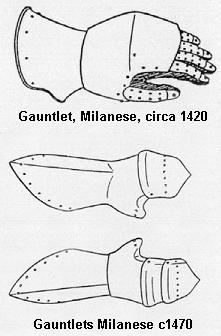
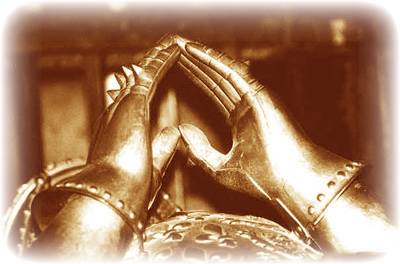


| Maciej Cierkosz wrote: |
|
I wouldn`t be myself if i hadn`t ask one more question... My friend, armourer, tries to reconstruct hourglass gauntlets from Bargello There`s only one problem for Him - He doesn`t know what exactly is written on the cuff... On internet there can be found only one photo of those gauntlets, with only part of phrase... Maybe You have some other view of them, or an information about these inscription... |
